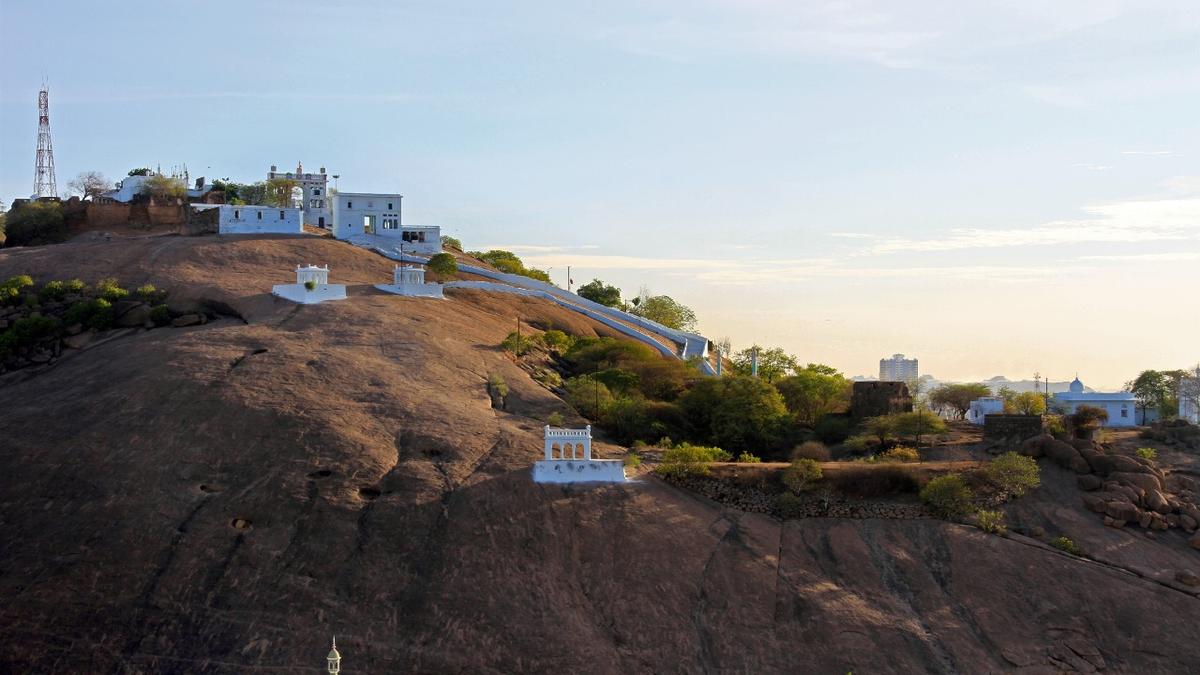
Of a city’s rocks as precious as the Kohinoor
The Hindu
“Hyderabad has always had such stunning rocks,” she says. “And any Hyderabadi you speak to will say that first sight of rocks give you the feeling that you’re home,” says Dublin-based Magal, the director of Other Kohinoors: The Rocks of Hyderabad, which will be screened in NGMA, Bengaluru, on November 13, and be accessible on YouTube after November 10.
The unique rock formations of Hyderabad, some of the oldest in the world, are a marker of home for most Hyderabadis, says filmmaker Uma Magal, who grew up in the city.
“Hyderabad has always had such stunning rocks,” she says. “And any Hyderabadi you speak to will say that first sight of rocks give you the feeling that you’re home,” says Dublin-based Magal, the director of Other Kohinoors: The Rocks of Hyderabad, which will be screened in NGMA, Bengaluru, on November 13, and be accessible on YouTube after November 10.
And yet, like many other urban centres, the city fights to retain its cultural and natural heritage, including its geology, in the face of rampant development. Hyderabad’s rocks, many of which were formed nearly 2.5 billion years ago, are being lost overnight, blasted, bulldozed and shattered to make way for apartment complexes and villas. Magal, while living in Hyderabad’s Gachibowli area in the early 2000s, says that she saw the rocks disappearing before her eyes. “I was in Hyderabad when my children were small,” she says, recalling how, like other parents in the colony, she would take her children to the rocks for picnics, rock walks and bouldering sessions. “They loved it,” she says.
However, in the decade that her children were growing up in Hyderabad, between 2007 and 2012, the rocks slowly began to disappear. “Hyderabad is a vibrant, modern, developing city, and we need infrastructure. I understand that and am not against it,” she says. “But all the rocks went.”
The grief she encountered at the loss of these rocks, an intrinsic aspect of the city she calls home, is channelled into Other Kohinoors: The Rocks of Hyderabad, a film that is both nostalgia and celebration. “I tried, very deliberately, not to lay blame or point fingers at anyone,” she says. “My goal was to make other Hyderabadis join this conversation and help to build a citizen voice.”
Magal says that the idea for the film emerged around 12 years ago as a small project for the children of the colony she lived in, who were very upset by the disappearing rocks. “I thought since I know this medium, I could make one small five-minute film, show it and talk through the grief they were going through,” she says. “That is how it started.”
Around this time, she also met an old friend and fellow Hyderabadi, Mahnoor Yar Khan. “She loves the rocks as much as I do,” says Magal, who told Khan about the film and also asked Khan to join her. Khan, who became the film’s co-producer, promptly agreed, and the duo began researching. It went on for many years. “I just went berserk…wanted to know more and more,” says Magal, who did a lot of reading and interviewed experts in the city as part of this research. “During the process, you discover yourself, your city, your people, your culture,” she says. “It was just wonderful.”

The Karnataka government has drafted a comprehensive master plan for the integrated development of Kukke Subrahmanya temple, the State’s highest revenue-generating temple managed by the Hindu Religious Institutions and Charitable Endowments Department. The redevelopment initiative is estimated to cost around ₹254 crore and aims to enhance infrastructure and facilities for devotees.












